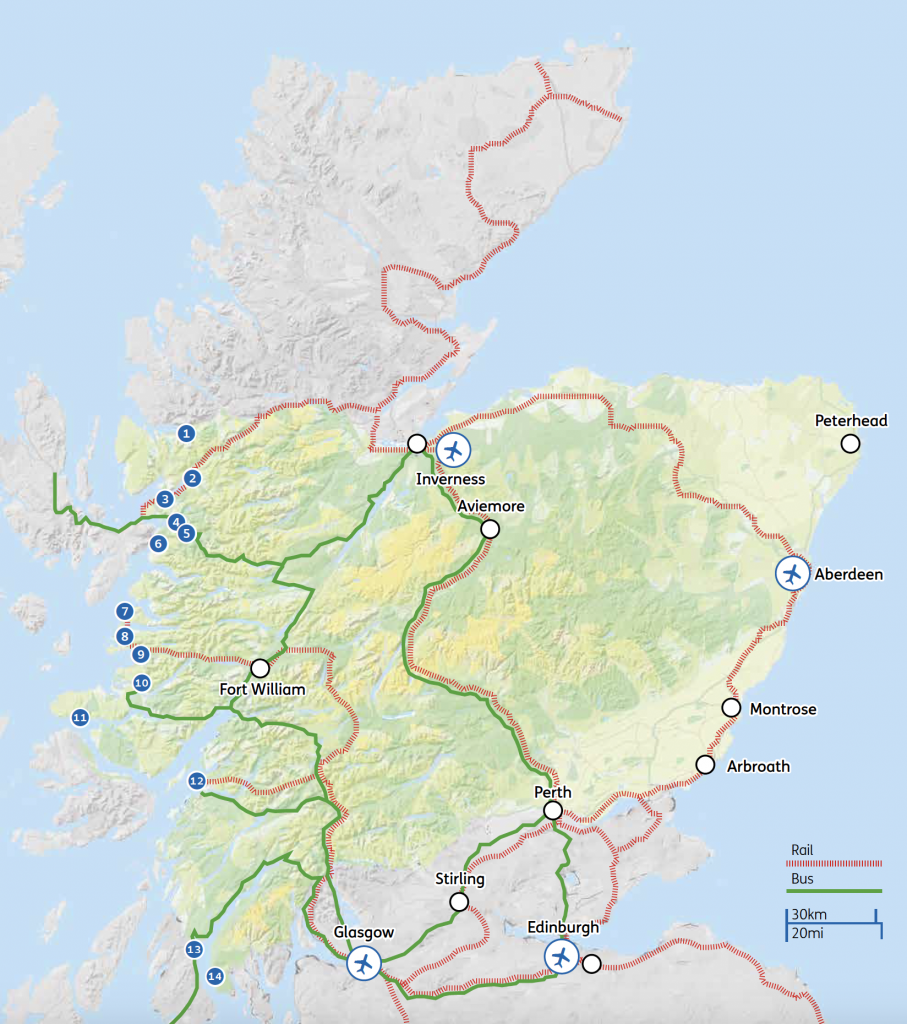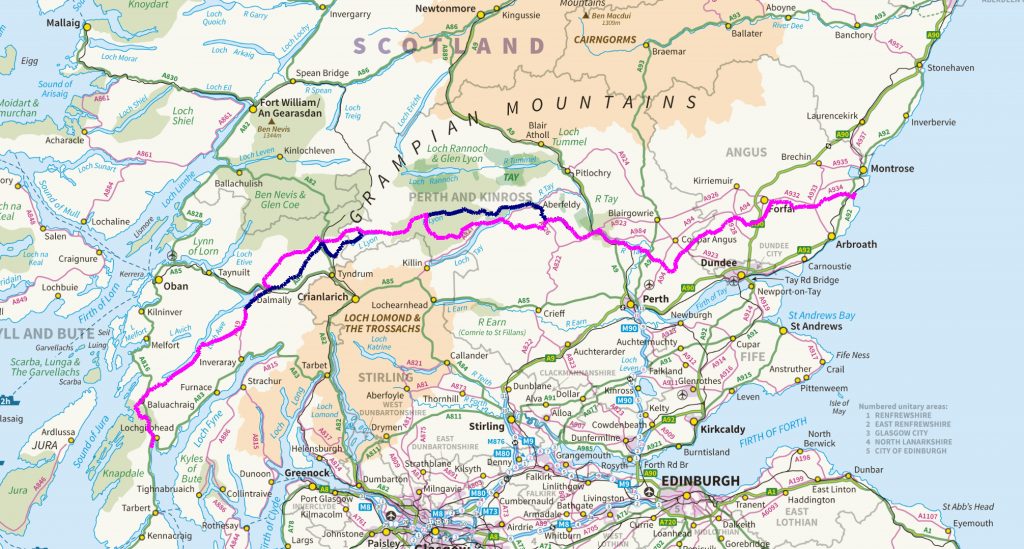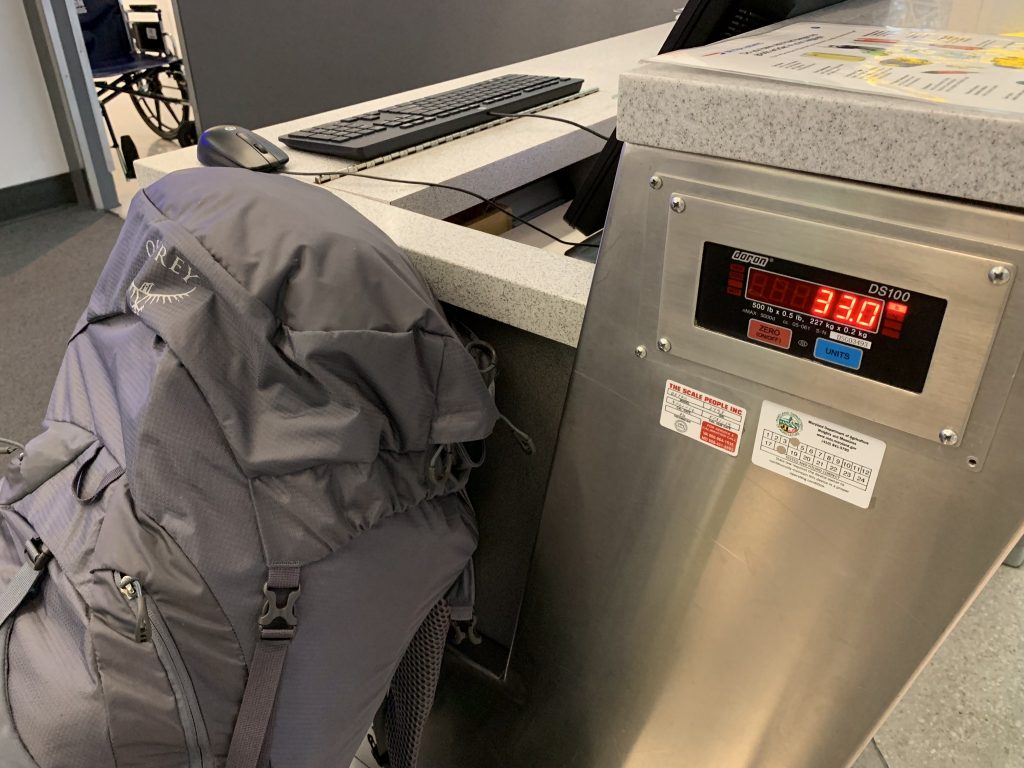I’m back to do The Great Outdoors Challenge a fourth time.
As some of you may know, this is a two-week backpacking hike across Scotland. About 300 people leave from various places on the West Coast on the same day—Friday, May 10 this year—and finish 13 or 14 days later at various places on the East Coast. Traditionally, they take by off their boots and wade into the North Sea.
There is no set or required route for this crossing. Each route is “bespoke” (as the organizers like to say), crafted from the skein of hiking paths, farm roads, ATV tracks, drover’s trails laid down in medieval times, modern paved thoroughfares, and in some places trackless land. Devising a route, describing it to the organizers and their committee of vetters, and getting it approved (often with revisions) takes almost as much time as the walk.
It’s what Challengers (as we’re called) do in February.
Here is a map of most of Scotland, with the territory in which the Challenge occurs denoted in green. It’s a lot of territory.
One of the many appeals of the Challenge is the opportunity to explore some of the Highlands, the sparsely populated, largely treeless, unquestionably legendary region that comprises the northwestern part of Scotland. However, there’s no avoiding the less hilly and more thickly settled eastern half of the country (which is beautiful in its own right).

This year I’m starting from Ardrishaig, Number 13, in the lower left corner of the map.
In my first crossing I started from Maillaig, Number 7, which is midway up the West Coast. The second time I left from Strathcarron, Number 2, the second-most northerly departure spot. The the third time, in 2016, it was from Torridon, Number 1, the most northerly.
Here is a detailed view of the route, in pink. The blue sections are “foul-weather alternatives” that you have to file (and use) in case weather doesn’t permit following the trackless or high-altitude intended route.

Montrose, on the east coast, is where we all gather for a post-walk banquet. You don’t have to get there by foot. Most people put their feet in the sea somewhere else, and get to Montrose by bus or car.
This crossing will be less wild than the previous ones. I am staying in B&Bs or guest houses five nights—which is either a concession to age or an adjustment to a civilized route, take your pick. Many Challengers would call me soft.
The route borrows heavily from one taken in 2011 by Jean Macrae Turner, a wonderful Scotswoman whom I met on my first or second Challenge. She’s a surgeon, now retired, who’s done the Challenge with her husband, Allan (also a surgeon), and one of her sons, but in recent years has been doing it alone, as she is again this year. Her 2011 route had a historical theme, passing Neolithic and Bronze Age sites and ruined castles, which appealed to me. I’m thankful for her advice.
While I’m at it, let me once again thank Roger Hoyle, a
retired lawyer and Englishman whom I met by chance in Moscow in 2013, for telling me about the Challenge and advising me on routes, gear, and people in each of my crossings. I couldn’t have done this without him.
As I write this I’m in Glasgow, by now one of my favorite places.
It’s the Baltimore of Scotland—once a great builder of ships, the medical capital of the country, home to unwell-known art museums, post-industrial, full of row houses and heroin deaths.
I’m staying at the same low-rent hotel—the Victorian House—that I’ve visited in the past. It’s one block from the Glasgow School of Art and the beleaguered Mackintosh Building, of which you’ll learn more if you stay tuned.
I’m trying to make this crossing lighter. I’ve spent hundreds of dollars to buy dozens of ounces in weight-reduction. I have a new backpack—my 20-year-old one developed a tear from overeating—as well as new “waterproofs” (as they call rain gear over here), a new stove, and a few other items.
I’ve just mailed four envelopes overstuffed with freeze-dried food and topo maps to places I’m stopping at along the way. I’m carrying two—two—canisters of propane fuel for the stove because the camping store man convinced me that where I was going they wouldn’t have any. (Macbeth, take note.) And of course the five pounds of electronics, which is my concession to me (and you, if you’re still listening).
That said, my backpack is lighter this time (even without all the food I’ll be carrying) than it was in the past.

Whether it’s light enough: we’ll see.
In the meantime, there are things to see and do in Glasgow.
Recent Comments